Throwback Thursday: P.A.F.A. Period Glass Plate Photo Negatives
Carefully Uncovering the Contents of a Sealed Box in the Archives, Labeled ‘Fragile – Handle with Care‘
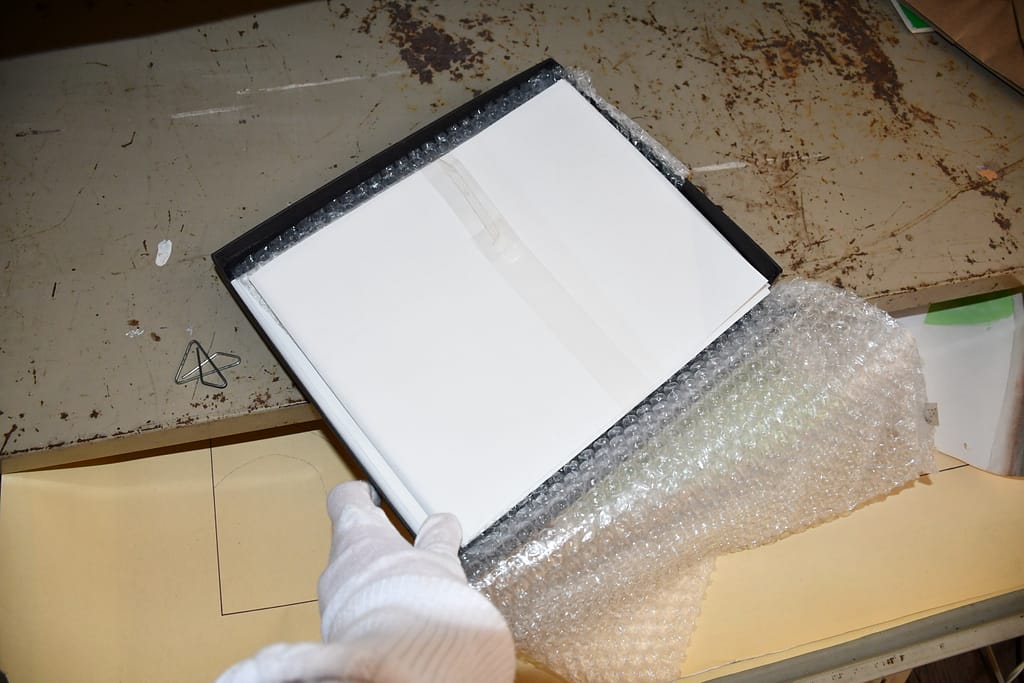
Stuck in Limbo
In the Moore Archives at Historic Yellow Springs, there is a filing cabinet filled with items that have been donated or collected over the years, awaiting processing in our system.
These items cover a wide range, from the projectile points discussed in a previous Throwback Thursday post to a keepsake pin given as a gift to the archivist during the 10th anniversary celebration of the Yellow Springs Association. This storage shelf is referred to as the “limbo” shelf, where items are safely stored until we can preserve them properly.
As part of the digitization process, the archives aim to add these records to our collections in their entirety, meaning carefully opening, scanning, identifying, and accessing each item on that Limbo shelf is required.
This week, while doing so, we uncovered something fascinating.
What’s in the Box?
We found a sealed box that looked like it had been mailed and delivered as a package, and the date on that box read 1991.
As we unpacked the box, marked with a brief note saying “glass plate negatives: fragile, handle with care,” we discovered a layer of bubble wrap and several tri-fold folders.
Carefully unwrapping the first folder, we found what appeared to be just that: fragile glass plate negatives. They looked quite deteriorated and seemed to be very old, much older than the 1991 date we initially thought they would be.
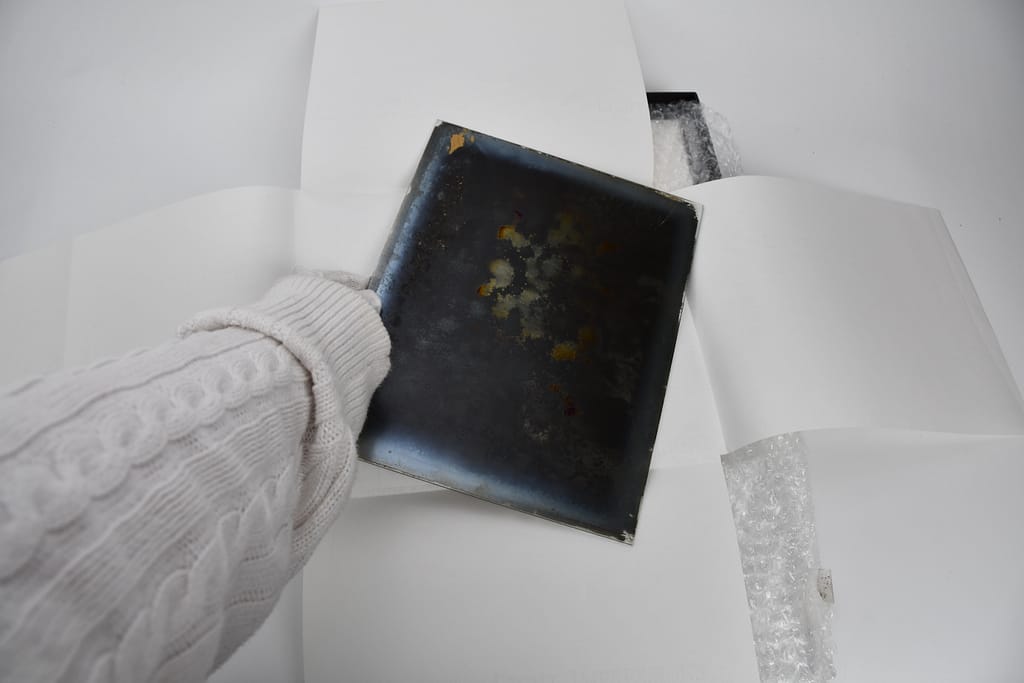
Based on the look of the negatives, the photography used, and the clothing of the people in the photos, we can estimate that these photos date from the PAFA period.
This was the time when our campus functioned as a country school for students at the Pennsylvania Academy of Fine Arts.

PAFA maintained a country school at Yellow Springs from the late 1910s and the early 1950s.
However, based on the hairstyles and outfits of the women in the photo, we believe these images are from the 1920s or 1930s.
The Negatives about the Negatives
While going through the box, we found that the negatives are not in the best condition. This is understandable since they are likely around one hundred years old, however, it still poses challenges.
One negative has two cracks, and all of them have deteriorated quite a bit. Discoloration makes it hard to see the images clearly. They are very fragile due to their age and the way glass negatives are made, which involves a chemical reaction.
We scanned the negatives into our system to examine them more closely. We used an Epson scanner with its special film negative setting to do this.
Photo Negative #1

We scanned a photo negative that shows four young women with “helmet hair” hairstyles on a farm.
Upon closer look, we realize they are actually on the hill above our campus.
In the background, we can see what is now the Chester County Library and part of the Washington Building.
The women are smiling at the camera and wearing work clothes suitable for fall. They are holding corn that they picked, meaning it is Harvest time at PAFA.
Photo Negative #2

The second photo negative shown above was the most damaged. It has three visible cracks, so we had to be careful when arranging it on the scanner.
We were pleasantly surprised by how clear the scanned image turned out. This negative seems to have the least chemical damage.
The image shows the Lincoln Building, which now houses the Moore Archives, during the 1920s or 1930s.
Since these photos were likely taken around the same time (possibly on the same day) we can guess this scene is from harvest season in late October or early November.
In the picture, a boy (or possibly a shorter man) holds what looks like a baseball bat while walking on the road in front of the Lincoln Building.
The road looks unpaved, made up of fine gravel and dust.
Notably, telephone wires are visible. This indicates the date is likely from the late 1920s or 1930s, rather than the early 1920s when phone lines were less common.
Photo Negative #3
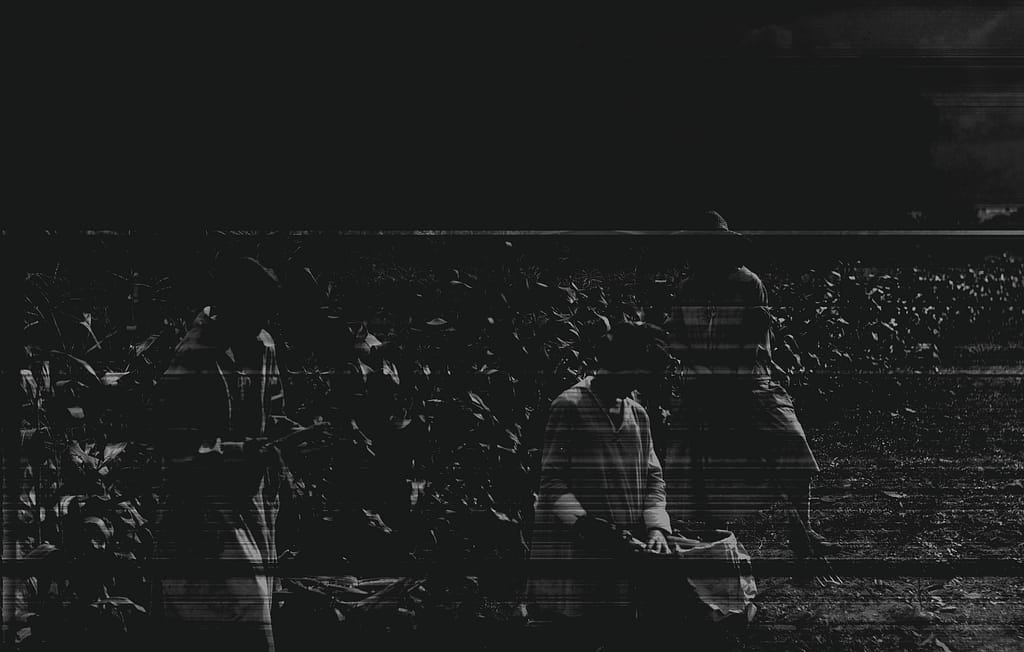
When we scanned the third photo negative, we found it had the most chemical damage. We could just see the outline of the cornfield and the woman from the first negative, but not much more.
To get a clearer image, we briefly used a backlight to see how the negative looked on a light table. We then stored the negative in archival-grade materials right away to protect it.
After scanning, we carefully stored all the negatives in the same way to prevent further damage.
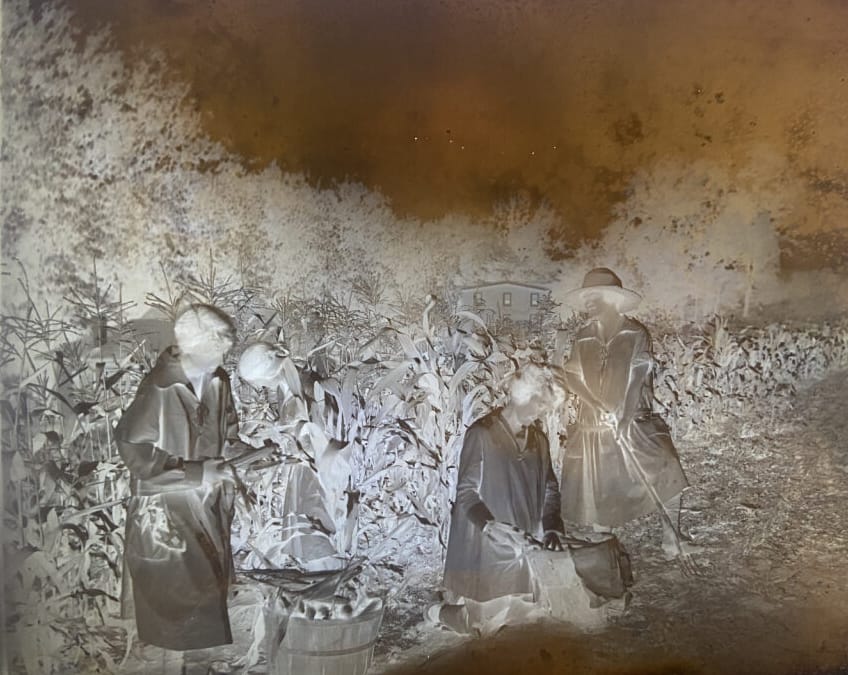
We were able to photograph a clearer image using this technique.
Cleaning Up the Picture
We took a modern photograph of photo negative #3 and used programs like Adobe and Canva to edit the image and invert the colors.
This process helps us see what the photo negative would have looked like if it weren’t too damaged to scan.
It also shows how it would have appeared when developed into a photograph at the time it was taken.

Harvest Time at Yellow Springs
The land of Yellow Springs has a long history of farming. Recent archaeological findings show that this area was a great choice for agriculture by the Lenape people and their ancestors.
Records indicate that colonial owners also farmed this land.
Estate owners like Dr. Samuel Kennedy, who gave the land for a Revolutionary War hospital, and Dr. Lingen, who owned the land as a hydrotherapy resort in the late 1800s, both used the land for farming during their times.
The tradition of farming continued during the Orphan School period, where students learned agricultural practices and often cooked and ate the crops they grew.
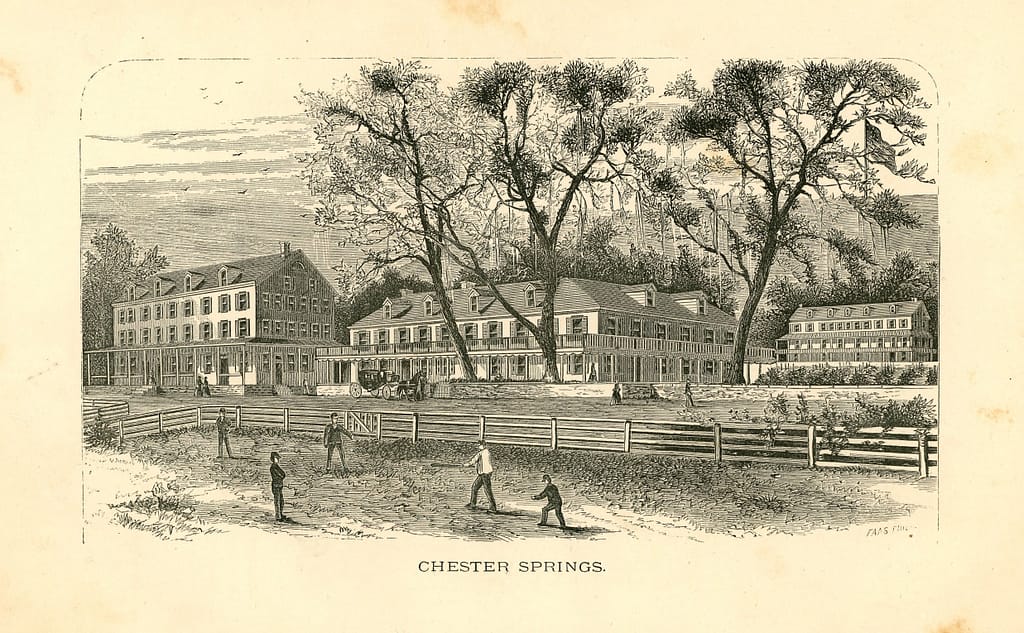
This illustration comes from the 1880 Annual School Report of the Soldier’s Orphan School. It shows a farm that the students (and likely some staff) maintained.
In the background, we can see the Lincoln building and the Washington building, with the old Hospital building in the back right. This building burned down twice and now stands as a memorial on our campus.
Interestingly, the farm is also located on a hill, similar to the slope where the women in photo negatives #1 and #3 are farming.
To Us, Today
As the seasons change and we enter the harvest season ourselves, it is important to remember that for many centuries, the rhythm of this land has ebbed and flowed with the changing of the seasons.
These photograph negatives from around 100 years ago remind us that as much as things change, they also tend to stay the same.
And it seems that cozy clothes and harvest season photoshoots are a time-tested tradition.
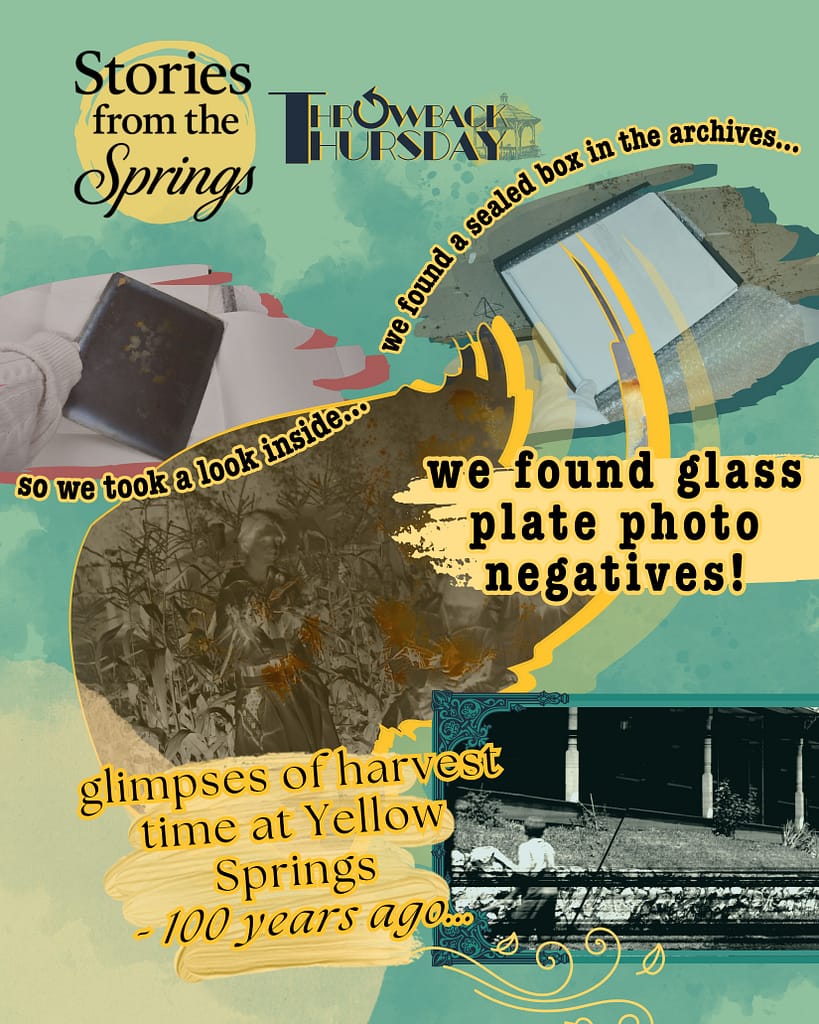
🍂🌽🤠
Learn more about the history of Yellow Springs
You can read the more in-depth version of this post here
Follow us on Substack, Instagram, and Facebook
🍂🌽🤠